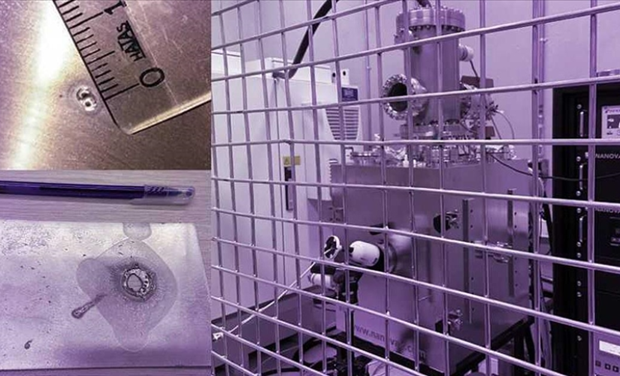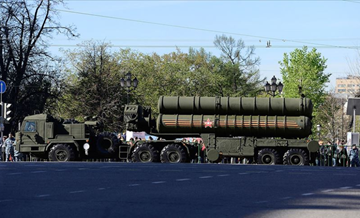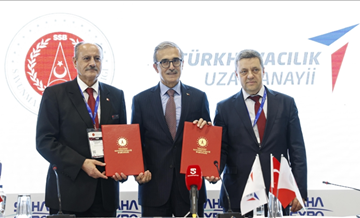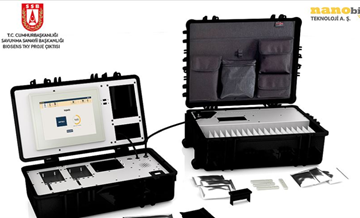The first firing tests were successfully carried out in the Electron Gun Development Project carried out in ASELSAN.
The success achieved with the electron gun, which is the most critical component of 3D printers for additive manufacturing, enabled another important step in the development of domestic and national 3D printers that can be used in the defense and aviation field.
In the tests, the electron beam with a power of 4.32 kilowatts was impacted on a 2 centimeter thick copper test plate under vacuum. The electron beam kept on for 10 seconds formed a melt pool of approximately 1.5 millimeters in diameter in the copper plate.
In order to remove electron beam at higher voltage values, a corona ring to prevent arc formation was designed and produced. Bundle extraction test was carried out with the corona ring. The designed part achieved a successful result in preventing arc formation and reached the targeted voltage values of 90 kilovolts. The electron beam, which has a voltage of 90 kilovolts and a current of 10 milliamps, was struck by a 1.2 millimeter thick aluminum plate, creating a 1-centimeter-wide hole in the plate.
The electron gun prototype, whose work continues intensively, will be ready for the next phase this year for the "electron beam-metal powder interaction experiments".
Multi-dimensional benefit with a 3D printer
With additive manufacturing technologies, engineers are able to realize their designs in a short time and produce lighter and more complex parts as the constraints arising from manufacturing are eliminated.
In the domestic development projects of aircraft, helicopters, missiles, unmanned aerial vehicles, satellites, and jet engines specified in the Strategic Plan of the Presidency of Defense Industries within the scope of "Gaining Competence in Defense and Security Technologies", performance, cost and competitive advantage can be achieved.
Additive manufacturing technologies can also be used in aviation maintenance activities. In repair processes, which are the weak points of maintenance organizations, the necessary repair materials can be easily designed and used on the aircraft thanks to the additive manufacturing method. Thus, while faster solutions are produced in repairs, high amounts of repair materials will not be kept in the inventory of the organization, and storage costs will be significantly reduced.
AA






